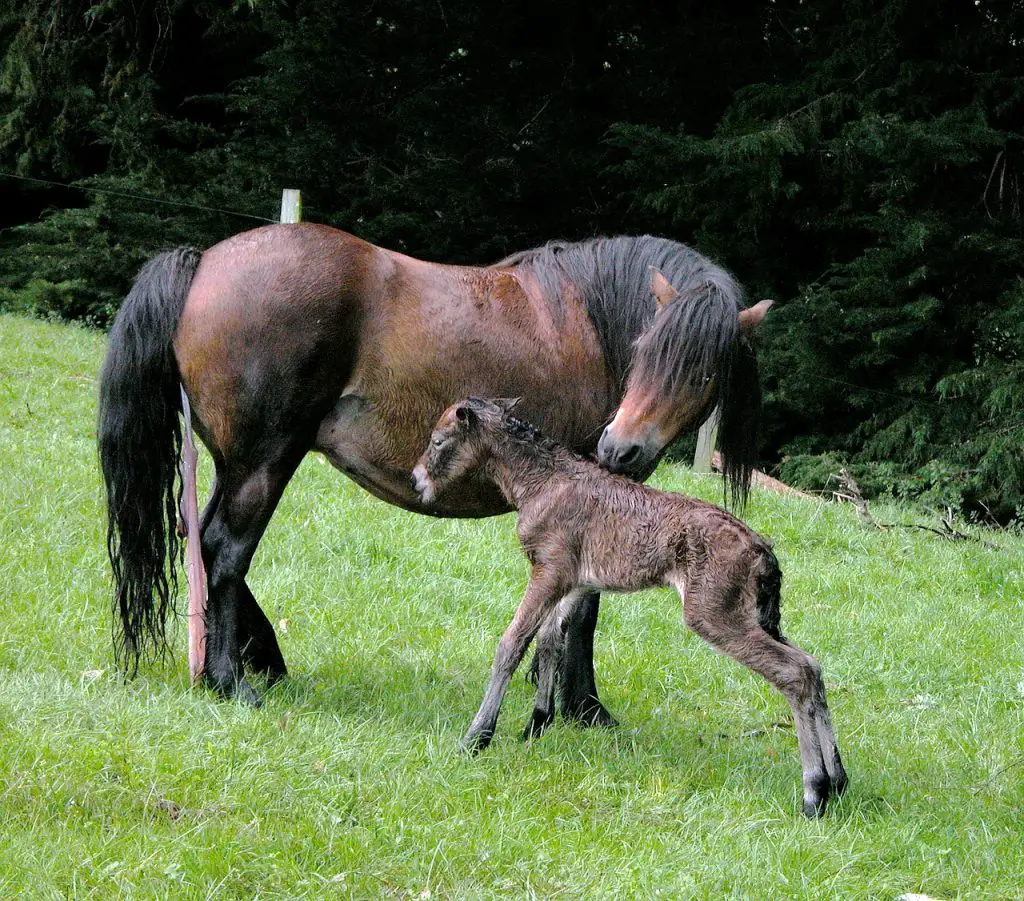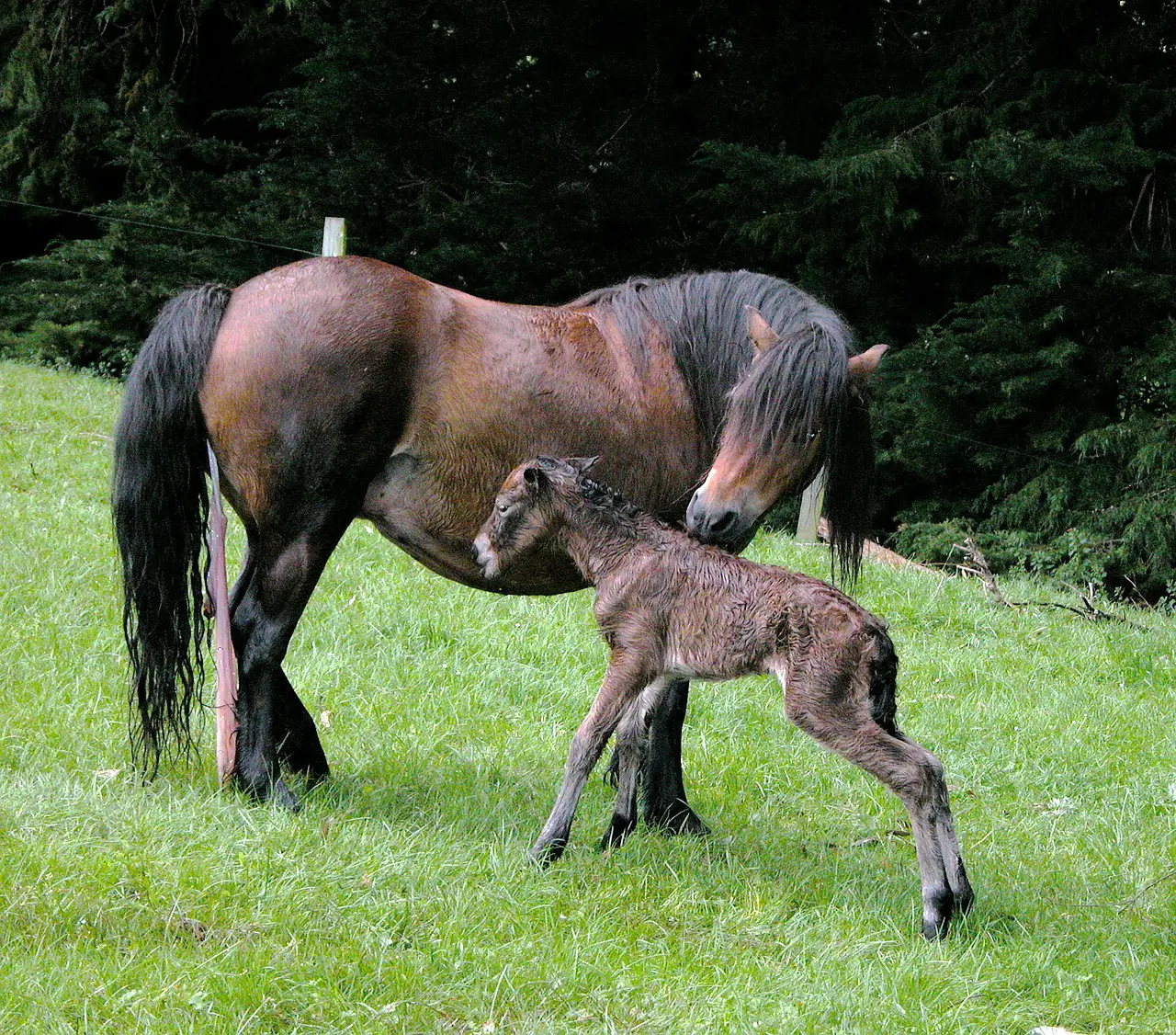Last Updated on February 23, 2022 by Allison Price
After the water breaks, it takes horses around 15-25 minutes to give birth. The horse should then expel the placenta between 30 minutes and three hours later. If a horse takes longer than 30 minutes to deliver, or takes longer than three hours to expel its placenta, it is best to call the vet.
How do you know when to recognize signs of labor? Many people miss interpret signs of labor. It’s important to recognize signs of labor and understand what’s going on with horses.
What length of time do horses labor?
It is always a concern of mine to know how long my horse will be in labor. Unexpectedly, I had a foal delivered in 10 minutes. There are some other factors that can occur before and after a horse goes into labor.
Each mare will have a different time frame for how long your horse stays in labor. The labor process may take as little as 2 hours if everything goes smoothly. Many mares can take between six and seven hours to give birth to a healthy foal or placenta.
Equine labor is divided into three phases. Phase one is when horses experience contractions in their uterus. These contractions can be very uncomfortable and irregular.
You may have seen a horse suffering from colic. This is similar to the way a mare in the first stages of labor acts. It’s a good indicator that labor has started.
Any unusual or distressful behavior is a sign of impending labor. You may notice the mare stooping and laying down, sweating on her neck or flanks, nervous movements, irregular urination, and nervous looking back at her stomach. This phase can last anywhere from one to four hours.
Phase 2 of labor starts when the horse begins to break water. This happens because the fetal sac bursts and allantoic liquid comes out. This is different from urination because a lot fluid rushes out of the horse’s body when it breaks down. The horse usually lies down or stops moving.

At this point, the uterine contractions get more intense. You should be able to see the amniotic sac and the foal’s front legs escaping from the belly within 10 minutes.
If everything goes according to plan, this stage of labor is quick and relatively easy. The foal should be down on the ground within 30 minutes. If the foal is not on the ground within 30 minutes, this is a serious situation and you should immediately contact your vet.
The third phase begins when the foal has been born and ends when the placenta is out. You can inspect the placenta to obtain vital information about the mare’s and foal’s health.
The foal usually has the placenta out within an hour. The horse is considered to be at risk by most veterinarians if the placenta doesn’t leave the stomach within three hours of delivery. Equine laminitis can be caused by the retained placenta.
What time do horses give birth to their babies?
The phrase “The foal chooses a day but the mare chooses an hour” has been used many times, but it didn’t make sense until I started researching foaling time for horses.
One of the most interesting things about horses that I discovered was that they can control when they give birth. Is there a preferred time for horses to labor?
Mares love to give birth at midnight, when it is dark and quiet. This has been the case with my horses. It’s not true for all births. Some mares wait until the morning to give birth, while others can give birth anytime of the day.
Because horses relied on their instincts, they have survived for thousands of years in wild settings. Many believe that nighttime delivery is one such instinct. According to some, if the mare delivers babies at night, it reduces the chance that predators will attack them.
The darkness covers the foal and mother from predators. This gives them both a greater chance of survival than daytime births. It’s not surprising that horses continue to follow their instincts today.
Although it may seem natural that horses would prefer to give birth at night, there could be another reason. It could be melatonin. Horses release melatonin at night.
Among other purposes, melatonin acts as an Anti-inflammatory in mammals. Horses are better equipped to deal with any infection or damage they might sustain during night labor because it is abundant at night.
Other aspects of equine pregnancy are also influenced by melatonin. The production of melatonin helps to keep the placenta attached to the uterus wall and increases the chance of a healthy birth. A healthy foal’s circadian rhythm is also ensured by adequate amounts of melatonin.
Every pregnant horse should be exposed at all times to natural lighting. To produce melatonin, you can use a low intensity red light source to create melatonin if your mare is giving birth in a darkened stall.
Here are six things horses require in their stall.
Are horses able to give birth while lying down?
Many people wonder if horses prefer to be born standing up or lying down. The confusion could be because giraffes, which are mammals that strangely resemble horses in appearance, give birth standing up.
Horses usually give birth on their backs. The foal emerges from the womb with its head down.
Horses love to lie down after giving birth because it preserves the umbilical chord. The umbilical cord in the belly transfers nutrients and oxygen to the baby. This process can continue even after the foal is born.
The umbilical cord should never be cut during birth. It can lead to excessive blood loss and infections. The umbilical cord naturally breaks when foals start to move or stand when they are delivered by mares lying down.
The foal should stay close to its mother until blood stops flowing through her umbilical cord. Standing up gives horses the best chance of having their umbilical cord cut before it should. Oder the foal gets hurt when it falls to the ground.
Can a horse stop working?
There have been a few instances where horses seem to deliberately stop labor. The mare was seen to be in labor for days before she actually gave birth to the foal. Is this possible?
Although a horse cannot stop labor indefinitely, they can delay or even reverse it if they are upset at the beginning of labor. This practice should not be encouraged as it could prove to be dangerous for the foal or mare’s health.
We have already discussed that mares can show signs of discomfort in the first stage of labor. During this period, they shouldn’t be disturbed. A mare may temporarily stop labor if she feels threatened or thinks it is not the right time or place for her foal.
This fact should be remembered when pregnant with a horse.
What is the name of it when a horse gives birth to a baby?
When referring to the birth or rebirth of a horse, it is worth noting that “foal”, which refers to horses, is more commonly used than “labor” and “delivery”. The terms foaling and foaled are used to replace the words “in labor” and “delivered” respectively. A pregnant mare is considered to be “in foal.”
Do horses make noises during birth?
Horses are more comfortable giving birth to babies than humans. Research shows that mares don’t have any stress hormones or adrenaline when they foal.
While giving birth, a mare may make strains and grunts while making little noise. After the foal has been delivered, the mare will often show her affection by softly nickering and touching the foal. She shows that, unlike humans, giving birth to horses is usually not difficult.
Foal mares are not dependent on any other equines so distress sounds during birth aren’t very beneficial. The mare does not express concern for the safety of the foal once it is born. She may call it back occasionally if it wanders off.



